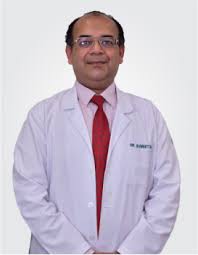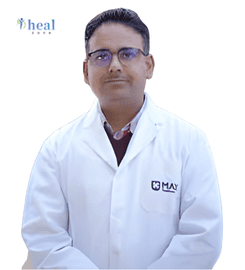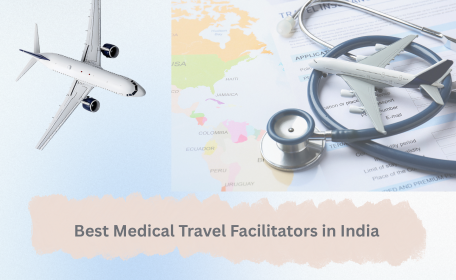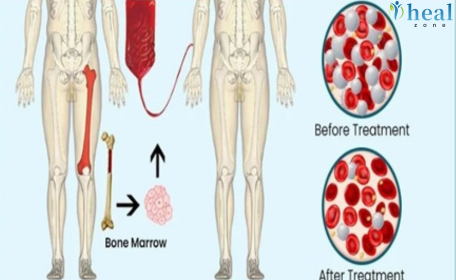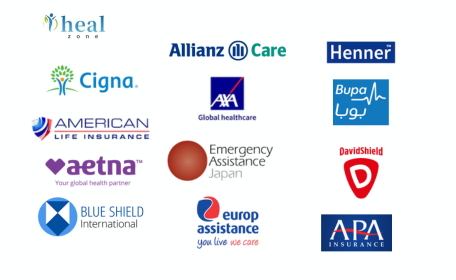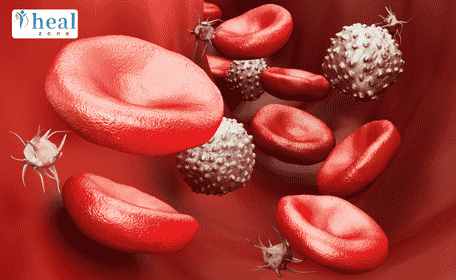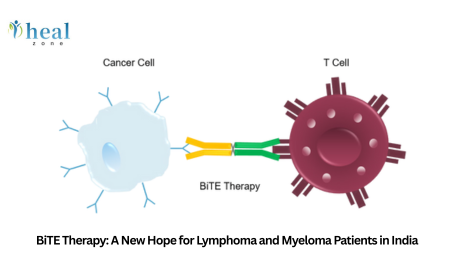What Is GERD and How Is It Different from Occasional Acid Reflux?
GERD (Gastroesophageal Reflux Disease) is a chronic condition where stomach acid persistently moves into the esophagus due to a weak or dysfunctional lower esophageal sphincter (LES). This differs from occasional heartburn or acid reflux which is mild and infrequent.
Key Characteristics of GERD:
- Occurs more than twice a week
- Can cause damage to the esophageal lining
- May lead to complications like Barrett’s esophagus, ulcers, and strictures
GERD often requires long-term lifestyle changes, medication, and sometimes surgical correction when conservative methods fail.
What Are the Common Symptoms and Causes of GERD?
Common Symptoms:
- Persistent heartburn (burning sensation in the chest)
- Regurgitation of sour liquid or food
- Chest pain, especially when lying down
- Difficulty swallowing (dysphagia)
- Chronic cough, sore throat, or hoarseness
- Feeling of a lump in the throat
Common Causes and Risk Factors:
- Weak lower esophageal sphincter (LES)
- Obesity
- Hiatal hernia
- Pregnancy
- Smoking, alcohol, or caffeine
- Certain medications (NSAIDs, sedatives)
Identifying and addressing the root cause is crucial for long-term GERD management.
What Are the Types of GERD Treatment Available in India?
India offers both non-surgical and surgical options for GERD treatment, customized to patient condition and severity.
Non-Surgical Treatments:
Lifestyle modifications: Weight loss, diet adjustments, head-of-bed elevation
Medications:
- Proton Pump Inhibitors (PPIs)
- H2-receptor blockers
- Antacids
Endoscopic therapies:
- Radiofrequency ablation
- Endoscopic fundoplication
Surgical Treatments:
- Laparoscopic Nissen Fundoplication: Reinforces LES by wrapping part of the stomach around it
- LINX Reflux Management System: Magnetic ring placed around LES
- Stretta Procedure: Radiofrequency energy strengthens the LES
India offers a comprehensive range of GERD treatment solutions with minimally invasive surgery as the gold standard for chronic or medication-resistant cases.
What Is the Standard GERD Treatment Protocol for International Patients in India?
India follows a clear, streamlined protocol for international patients seeking GERD treatment.
1. Pre-Arrival Consultation:
- Initial review of medical history
- Sharing of any past diagnostic tests (endoscopy, pH monitoring, manometry)
- Tentative treatment plan and visa invitation
2. On Arrival Evaluation:
- Clinical examination and assessment
- Diagnostic tests:
- Upper GI Endoscopy
- 24-hour pH monitoring
- Esophageal manometry
- Barium swallow study
3. Treatment Planning:
- Non-surgical management for mild to moderate GERD
- Surgical evaluation for chronic, medication-resistant GERD
4. Surgery (if indicated):
- Procedure duration: 1–2 hours (laparoscopic)
- Hospital stay: 2–3 days
- Discharge with recovery and medication plan
5. Recovery & Tele-follow-Up:
- Resume soft diet in 3–5 days
- Light activity in 1–2 weeks
- Full return to routine in 3–4 weeks
- Ongoing follow-ups via video consultation
India ensures end-to-end patient management, from diagnosis through to discharge and aftercare, especially for global travelers.
Who Should Consider GERD Surgery and When Is It Necessary?
Surgery is recommended for patients with chronic or severe GERD who have:
- Poor response to long-term medication (especially PPIs)
- Reluctance or side effects from long-term drug use
- Structural complications like hiatal hernia
- Barrett’s esophagus or risk of esophageal cancer
- Lifestyle-impacting symptoms despite medical therapy
Minimally invasive surgery in India offers long-lasting relief, often eliminating the need for medication entirely.
Why Is India an Ideal Destination for GERD Treatment?
India is among the most trusted countries for comprehensive GERD care, offering high-quality diagnostics, endoscopic therapy, and surgical expertise at globally competitive costs.
Top Reasons to Choose India:
- Globally trained gastroenterologists and surgeons with experience in advanced reflux treatments
- Access to modern endoscopy units and 3D laparoscopy
- Fast-track evaluations and surgery scheduling – no long wait times
- Integrated care: diagnostics, surgery, rehab, and follow-ups all under one roof
- Excellent cost-to-quality ratio – outcomes equivalent to the US/UK at a fraction of the price
- Seamless experience for international patients with language and logistical support
Whether you're managing long-term GERD symptoms or seeking minimally invasive surgery, India offers a complete and affordable solution.
Why Choose Healzone for GERD Treatment in India?
Healzone is a trusted medical travel partner for international patients seeking high-quality treatment in India, ensuring a personalized and stress-free care journey.
Healzone Offers:
- Pre-arrival case evaluation with senior specialists
- Coordinated scheduling for endoscopy, manometry, and surgery
- Detailed treatment and cost plan before travel
- Visa assistance, airport transfers, interpreter services, and hotel booking
- Dedicated care manager available 24/7 during your medical stay
- Follow-up teleconsultation after returning to your home country
Healzone is your one-stop solution for navigating GERD treatment in India with clarity, confidence, and convenience.
What Technologies and Devices Are Used for GERD Treatment in India?
India uses globally certified medical devices and minimally invasive techniques for precise and effective GERD management.
Diagnostic Devices:
- High-definition Upper GI Endoscopy: Visualizes esophageal damage
- 24-Hour pH Monitoring Systems: Tracks acid reflux episodes
- Esophageal Manometry: Measures LES pressure and motility
- Barium Swallow with Digital Fluoroscopy: Detects hernias and reflux
Surgical Devices & Techniques:
- 3D Laparoscopic Equipment: Allows Nissen fundoplication with high precision
- LINX Reflux Management System: Magnetic sphincter augmentation device
- Stretta RF System: Non-surgical, radiofrequency energy therapy
- Robotic Surgical Platforms (in premium centers): For ultra-precise interventions
India’s hospitals use FDA-approved systems, offering outcomes equivalent to US and UK standards for a significantly lower cost.
What Is the Full Cost Breakdown for GERD Treatment in India?
The total cost of GERD treatment in India depends on whether it is managed medically or surgically. Here is a detailed cost estimate:
|
Service/Procedure |
Estimated Cost (USD) |
|
Initial Consultation & Examination |
$30 – $100 |
|
Upper GI Endoscopy |
$150 – $300 |
|
Esophageal Manometry & 24-Hour pH Monitoring |
$300 – $500 |
|
Barium Swallow X-ray |
$100 – $200 |
|
Medication Plan (3–6 months) |
$200 – $400 |
|
Laparoscopic Nissen Fundoplication Surgery |
$3,000 – $5,000 |
|
LINX Device Implantation (if chosen) |
$6,000 – $8,000 |
|
Hospital Stay (2–4 days, private room) |
$400 – $800 |
|
Post-op Medications & Diet Consultation |
$150 – $300 |
|
Total Cost (Non-Surgical Management) |
$1,000 – $2,000 USD |
|
Total Cost (Surgical Treatment) |
$4,000 – $7,000 USD |
Healzone ensures transparent billing, so all international patients know what to expect ahead of time — with no hidden charges.
What Are the Benefits and Expected Outcomes of GERD Surgery?
Surgical treatment for GERD, especially laparoscopic fundoplication, offers long-term relief and improved quality of life for patients who don't respond to medications.
Key Benefits:
- Elimination or significant reduction of reflux symptoms
- Discontinuation or minimization of lifelong medications
- Improved sleep, digestion, and respiratory health
- Reduced risk of complications like Barrett’s esophagus or esophageal cancer
- Minimal scars and shorter hospital stay due to laparoscopic technique
Most patients report complete symptom relief within 2–3 weeks and maintain results for 10+ years or even lifelong in many cases.
What Are the Risks or Complications Associated With GERD Surgery?
GERD surgeries, particularly fundoplication and LINX placement, are considered safe when performed by experienced surgeons. However, as with all surgeries, certain risks exist:
Possible Complications:
- Temporary difficulty swallowing (dysphagia)
- Bloating or inability to burp (gas-bloat syndrome)
- Infection or reaction at the surgical site
- Internal bleeding (rare)
- Hernia recurrence
- LINX device migration or malfunction (if implanted)
How India Minimizes Risks:
- Preoperative diagnostic studies to ensure the right surgical approach
- Use of minimally invasive laparoscopy to reduce complications
- Intraoperative endoscopy or navigation tools to verify positioning
- Post-surgery monitoring and early rehabilitation support
India’s leading centers maintain success rates above 95%, with complications occurring in less than 2–4% of patients.
What Is the Recovery Timeline and Aftercare Plan After GERD Surgery?
Recovery after GERD surgery is usually smooth, with most patients returning to daily activities within a few weeks.
Standard Recovery Timeline:
|
Recovery Stage |
Duration |
|
ICU/Monitoring |
First 6–12 hours post-op |
|
Hospital Stay |
2–3 days |
|
Resume soft diet |
3–5 days |
|
Resume light activity |
7–10 days |
|
Return to normal life/work |
2–3 weeks |
|
Full recovery (internal healing) |
4–6 weeks |
Post-Surgery Care Includes:
- Proton pump inhibitors (temporarily)
- Dietary guidance (soft foods, gradual reintroduction)
- Avoiding heavy lifting or strenuous activity
- Follow-up tests (endoscopy, pH monitoring if needed)
- Tele-follow-up appointments via Healzone
Most international patients are fit to fly in 10–14 days after surgery with a full recovery plan and digital support.
Why India Is the Best Choice for GERD Treatment
India provides a complete ecosystem for treating GERD — from diagnosis to drug therapy to advanced surgical correction — at an affordable price, and with internationally trained specialists.
Why Choose India:
- Cost savings up to 80%
- World-class diagnostics and surgical technology
- Skilled specialists in GERD management
- Full medical tourism support via Healzone
- High success rates and patient satisfaction





